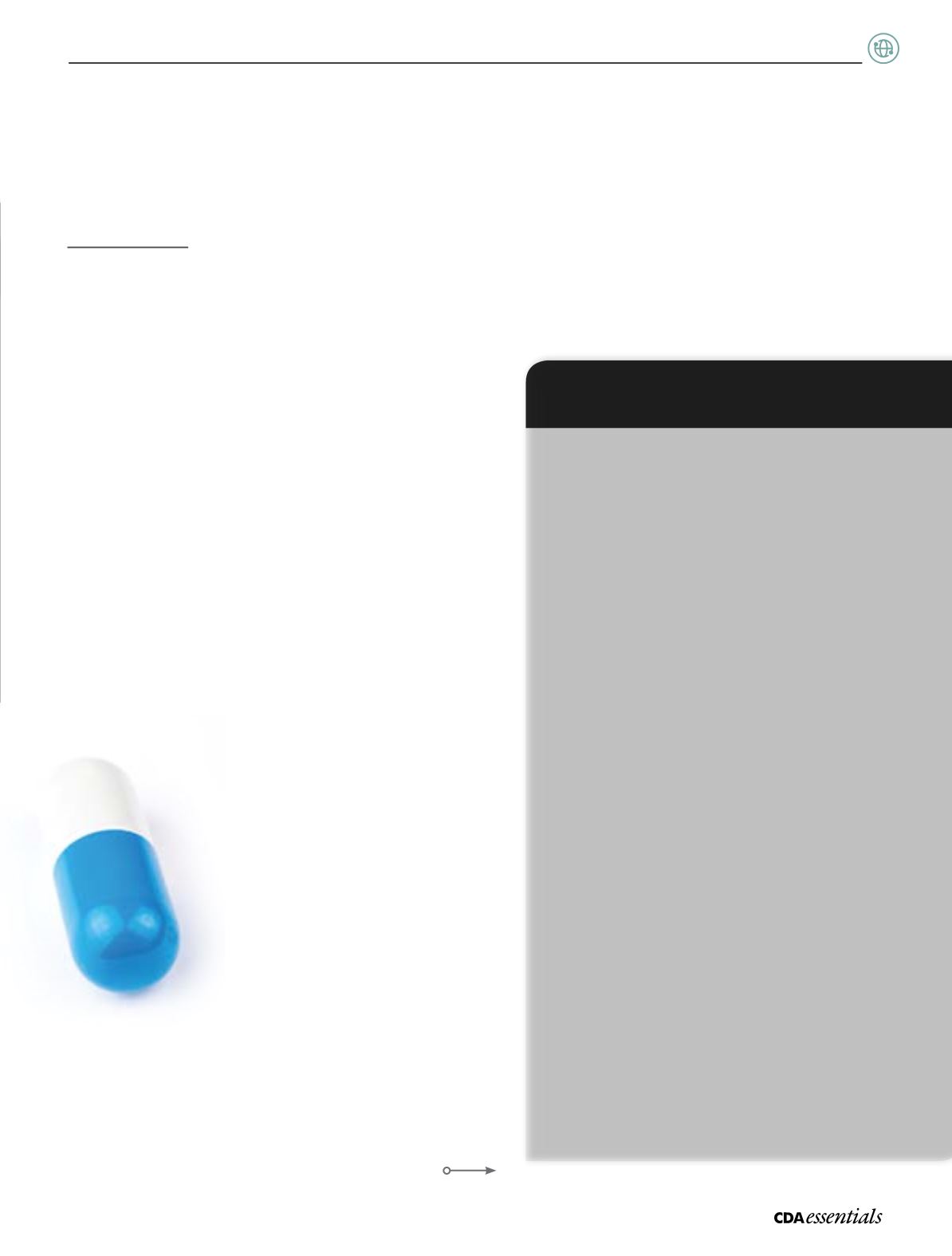

21
Volume 2 Issue 2
|
N
ews and
E
vents
A 2014 study
1
published in
The Lancet
shows the incidence of infective endocarditis (IE) grew following a sharp drop in
antibiotic prophylaxis prescriptions for patients at risk of developing this potentially fatal condition. The trend was observed
in England following a 2008 recommendation from the National Institute for Health and Care Excellence (NICE)
2
to stop
prescribing antibiotic prophylaxis solely for the prevention of IE.
UK study shows
Increase In Infective Endocarditis
After Drop In
Antibiotic Prophylaxis Prescriptions
“I think it’s important to understand that while this is a
well-conducted study, it does not causally link the drop
in antibiotic use with the increase in new cases of IE,”
says Dr. Carlos Quiñonez, chair of CDA’s Clinical and
Scientific Affairs Committee.
In contrast to the NICE guidance, CDA’s position on
prevention of IE
3
recommends the short-term use
of antibiotics prophylactically before routine dental
and medical procedures for patients at greatest risk
of developing IE. The CDA position aligns with 2007
guidelines from the American Heart Association (AHA).
4
“We recommend that Canadian dentists continue
following the 2007 AHA guidelines,” says Dr. Quiñonez.
“These guidelines identify those patients at greatest
risk of developing IE and provide information about the
appropriate antibiotic coverage needed.”
Dentists issue majority of
antibiotic prophylaxis
prescriptions
Before the NICE guidelines were introduced in
2008, prescribing of antibiotic prophylaxis for
prevention of IE had been fairly constant in
England: a single 3 g dose of oral amoxicillin
or, for patients allergic to penicillin, a
600 mg dose of oral clindamycin. Using
data on antibiotic prophylaxis prescribing
practices over roughly 9 years (4 years
before the NICE guidelines and 5 years
afterwards), researchers reported a dramatic decrease
in antibiotic prescribing. The mean number of antibiotic
prophylaxis prescriptions per month fell from 10,900
(pre-guidelines) to 2236 (post-guidelines), eventually
reaching a mean number of 1307 during the last
6 months of the study. Roughly 90% of the
prescriptions were issued by dentists and most were
for amoxicillin.
Only those at greatest risk of developing infective
endocarditis should receive short-term preventive
antibiotics before common, routine dental and medical
procedures. People who should take antibiotics include
those with:
1. prosthetic cardiac valve or prosthetic material used for
cardiac valve repair
2. a history of infective endocarditis
3. certain specific, serious congenital (present from birth)
heart conditions, including:
• unrepaired or incompletely repaired cyanotic
congenital heart disease, including
• those with palliative shunts and conduits
• a completely repaired congenital heart defect with
prosthetic material or device, whether placed by
surgery or by catheter intervention, during the first
six months after the procedure
• any repaired congenital heart defect with residual
defect at the site or adjacent to the site of a
prosthetic patch or a prosthetic device
4. a cardiac transplant that develops a problem in a
heart valve.
Antibiotic prophylaxis is recommended for patients with
the above conditions who undergo any dental procedure
that involves manipulation of gingival tissues or the
periapical region of a tooth and for those procedures that
perforate the oral mucosa. The following procedures and
events
do not need prophylaxis
:
• routine anesthetic through noninfected tissue
• dental radiographs
• placement of removable prosthodontic or
orthodontic appliances
• adjustment of orthodontic appliances
• placement of orthodontic brackets
• shedding of deciduous teeth
• bleeding from trauma to the lips or mucosa
Excerpt from CDA Position on
Prevention of Infective Endocarditis
3
















